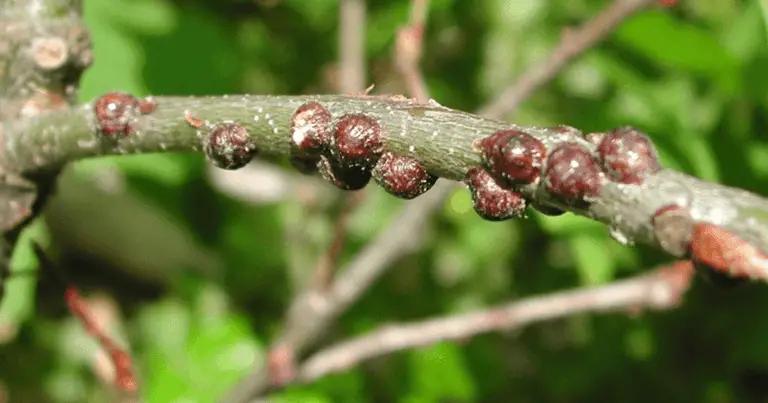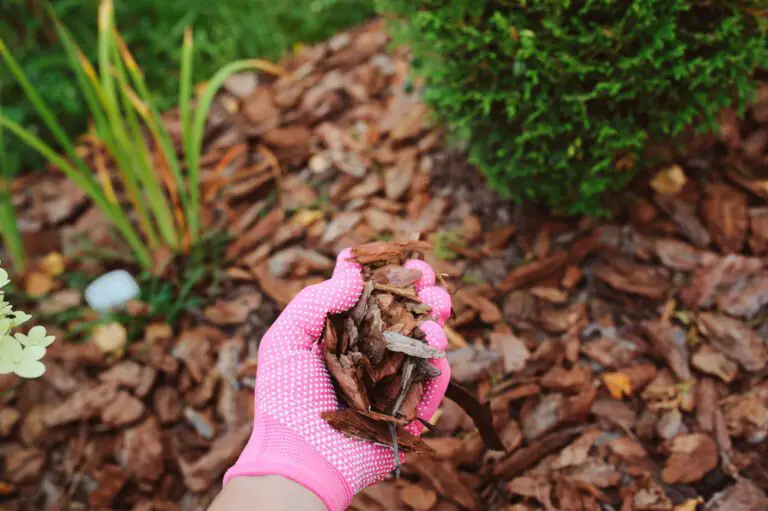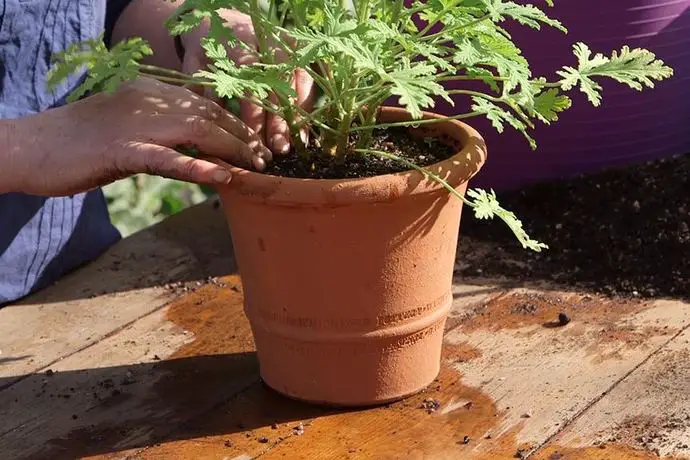Silty Soil Suggestions: Amending & Improving Silt
Table of Contents
Common Issues with Silty Soil
Silty soil, characterized by its fine particles and fertile properties, is a common type of soil found in many gardens. However, it comes with its own set of challenges. One of the main issues with silty soil is its tendency to compact easily, leading to poor drainage and reduced aeration for plant roots. This can result in waterlogged conditions and hinder root growth, affecting plant health and overall garden productivity.
Another common problem with silty soil is its susceptibility to erosion. The fine texture of silt particles makes the soil prone to being washed away by heavy rainfall or irrigation, especially on sloped surfaces. This erosion not only depletes the soil of valuable nutrients but can also disrupt the stability of the garden bed, leading to uneven ground levels and potential damage to plant roots. Addressing these issues is crucial for maintaining healthy silty soil and ensuring optimal growing conditions for your plants.

Understanding the Composition of Silt
Silt is a vital component of soil that falls between the size of sand and clay particles. It is made up of fine mineral particles, smaller than sand but larger than clay, with a smooth texture when dry. This soil type is known for its ability to retain moisture and nutrients due to its high porosity and surface area.
A distinguishing characteristic of silt is its tendency to compact easily when wet and become hard when dry, making it challenging for plant roots to penetrate and access water and nutrients. Understanding the unique properties of silt is crucial for successful gardening, as it requires specific management strategies to improve soil structure and ensure optimal plant growth and health.
Below is the composition of silt:
| Aspect | Description |
| Definition | Silt is granular material falling between the particle size of sand and clay. |
| Characteristics | Mainly composed of broken grains of quartz. |
| Dry silt has a floury feel, while wet silt lacks plasticity. | |
| Individual silt particles are difficult to see. | |
| Composition | Micas |
| Feldspar | |
| Quartz | |
| Clay minerals | |
| Smaller portion: clay | |
| Rough size fraction: quartz and feldspar grains | |
| Formation and Types | Loess: Wind-deposited silt deposits. |
| Siltstone: Consolidated aggregate of silt particles. | |
| Shale: Clay-rich silt with parting along bedding surfaces. | |
| Mudstone: Massive rock formed from silt without parting. |
Remember, silt plays a crucial role in soil texture and fertility, affecting water retention and overall soil health.
cc
Poor drainage in silty soil can lead to a range of noticeable signs that indicate underlying issues. One common indicator is standing water or puddles that persist for an extended period after rainfall or irrigation. This stagnant water can prevent proper oxygenation of the soil, leading to root suffocation and potential plant stress. Additionally, a foul odor emanating from the soil could suggest anaerobic conditions caused by excessive moisture retention, which may inhibit healthy plant growth.
Another sign of poor drainage in silty soil is the presence of waterlogged areas or soil that feels excessively wet to the touch. This excessive moisture can impede root development and nutrient uptake in plants, potentially resulting in stunted growth or yellowing foliage. Additionally, the prevalence of water-loving weeds such as sedges or rushes in certain areas of the garden may further indicate waterlogging issues in silty soil.

Benefits of Amending Silty Soil
When it comes to gardening in silty soil, the benefits of amending this type of soil cannot be overstated. Silty soil, while fertile, can pose challenges such as poor drainage and compaction. By incorporating organic amendments such as compost, manure, or leaf mold, gardeners can improve the soil structure, enhance water retention, and promote nutrient availability for plants. These organic materials also help support the diverse microbial communities necessary for healthy soil ecosystems.
In addition to organic amendments, inorganic options like perlite, vermiculite, or sand can be used to further enhance the physical properties of silty soil. These amendments can aid in improving aeration, preventing compaction, and regulating moisture levels. By amending silty soil with a combination of organic and inorganic materials, gardeners can create an optimal growing environment for their plants, leading to healthier root development, increased yields, and overall improved garden productivity.
Below is a table summary the benefits of amending silty soil:
| Benefit | Explanation |
| Improved Aeration and Drainage | Adding organic matter enhances soil aeration and drainage. Beneficial soil microbes thrive. |
| Nutrient Enhancement | Incorporating compost enriches soil with essential nutrients. Enhances silty soil fertility. |
| Stability and Erosion Control | Amended silty soil provides a stable base for plant roots. Prevents erosion in runoff areas. |
| Moderated Soil Temperature | Silty soil acts as natural insulation. Amending maintains consistent soil temperatures. |
Remember, nurturing your silty soil sets the stage for healthy plants and abundant harvests.
Organic Amendments for Silty Soil
Incorporating organic amendments is a vital step in improving the quality of silty soil. Organic matter helps enhance soil structure, increase nutrient content, and promote beneficial microbial activity. Compost, well-rotted manure, and cover crops are excellent choices for enriching silty soil with organic material. These amendments not only improve drainage and aeration but also aid in retaining moisture essential for plant growth.
Furthermore, organic amendments aid in reducing soil compaction and erosion, key issues often associated with silty soil. By adding organic matter regularly, gardeners can foster a healthier soil ecosystem that supports diverse plant life and enhances overall garden productivity. The gradual decomposition of organic materials releases nutrients slowly, providing a sustainable source of nourishment for plants in silty soil.

Inorganic Amendments for Silty Soil
Inorganic amendments play a crucial role in improving the structure and fertility of silty soil. By incorporating inorganic materials, such as perlite, vermiculite, or sand, gardeners can enhance drainage and aeration, which are common issues associated with silty soil. These amendments help prevent waterlogged conditions and allow for better root development, promoting overall plant growth and health. Additionally, inorganic materials can reduce compaction in silty soil, creating a more favorable environment for plant roots to access essential nutrients and oxygen.
Summary of inorganic materials that can be used as soil amendments for improving silty soil:
| Inorganic Material | Benefits |
| Vermiculite | Helps the soil retain water and nutrients. |
| Enhances soil structure. | |
| Perlite | Improves soil aeration and drainage. |
| Rock Phosphate | Provides essential nutrients like phosphorus and calcium. |
| Increases cation exchange capacity (CEC), improving soil structure. | |
| Sulfur | Can lower soil pH if needed. |
| Potassium Chloride | Supplies potassium to plants. |
| Magnesium Sulfate | Provides magnesium for plant growth. |
Inorganic amendments can also help balance nutrient levels in silty soil, ensuring that plants receive the necessary elements for optimal growth. By incorporating mineral fertilizers or lime, gardeners can address nutrient deficiencies and adjust pH levels, promoting healthier plant growth and higher yields. When used in conjunction with organic amendments, inorganic materials can create a well-rounded soil structure that supports a diverse range of plant species and enhances the overall fertility of silty soil.
Here are the advantages of using inorganic amendments to improve silty soil:
| Advantage | Explanation |
| Improved Soil Structure | Inorganic amendments enhance soil structure, leading to better aeration and drainage. |
| Increased Water Retention | These amendments improve the soil’s ability to retain moisture, benefiting plant growth. |
| Essential Nutrients Supply | Inorganic materials provide necessary nutrients (e.g., phosphorus, calcium) for plant health. |
| pH Adjustment | Lime and dolomite can balance soil pH, creating a favorable environment for plant growth. |
| Reduced Soil Compaction | Gypsum helps decrease soil compaction, enhancing root penetration and overall soil health. |
Tips for Improving Soil Structure
To improve the soil structure in your garden, it’s essential to focus on enhancing the texture and composition of the soil. One effective method is incorporating organic matter such as compost, manure, or leaf mulch into the soil. Organic amendments improve soil structure by increasing its ability to retain moisture, nutrients, and oxygen, while also promoting beneficial microbial activity. Additionally, incorporating inorganic amendments like perlite, vermiculite, or sand can help improve soil aeration and drainage, thus preventing compaction and enhancing root growth. By striking a balance between organic and inorganic materials, you can create a healthy and well-structured foundation for your plants to thrive.
Another practical tip for improving soil structure is to practice minimal tillage or no-till gardening techniques. Excessive tilling can disrupt the natural soil structure, leading to compaction and decreased microbial activity. By limiting mechanical disturbance and instead relying on methods such as sheet mulching or layering organic materials on top of the soil, you can promote the development of a stable soil structure that sustains plant growth. Moreover, rotating crops, intercropping, or planting cover crops can help break up compacted soil layers, enhance nutrient cycling, and foster biodiversity within the soil ecosystem.
Best Practices for Watering Silty Soil
When it comes to watering silty soil, it is important to strike a balance to ensure proper moisture levels without risking waterlogging. Overwatering in silty soil can lead to poor drainage, root rot, and nutrient leaching. Conversely, underwatering can result in dry, compacted soil that hinders plant growth. To optimize watering practices for silty soil, consider the specific needs of your plants and the environmental conditions in your area.
One effective practice for watering silty soil is to utilize a drip irrigation system or soaker hoses. These methods deliver water directly to the root zone, minimizing evaporation and runoff. It is also advisable to water deeply and infrequently to encourage strong root development and prevent shallow rooting. Monitoring soil moisture levels regularly and adjusting watering schedules based on plant requirements and weather patterns can help maintain healthy soil structure and promote vibrant plant growth.
Here’s a tabular summary of the best practices:
| Practice | Explanation |
| Prevent Erosion | Silty soil can easily cloud waterways when disturbed. Prevent erosion by stabilizing slopes and using vegetable cover. |
| Add Organic Material | Since pure silt lacks organic matter, incorporate compost or well-rotted manure to improve soil structure and nutrient content. |
| Mulch Heavily | Apply a thick layer of organic mulch (such as straw or wood chips) to retain moisture, regulate temperature, and prevent erosion. |
| Light and Frequent Watering | Silty soil holds water well but erodes quickly. Water lightly and frequently to maintain consistent moisture without causing runoff. |
Choosing the Right Plants for Silty Soil
When choosing plants for silty soil, it’s important to consider the unique characteristics of this soil type. Silty soil retains moisture well but can also become compacted easily, making it essential to select plants that can thrive in these conditions. Some plants that do well in silty soil include Japanese iris, bald cypress, sweet flag, and Siberian iris. These plants can tolerate the moisture-retaining properties of silty soil while also adapting to potential compaction issues.
Another factor to consider when selecting plants for silty soil is their root systems. Plants with fibrous root systems, such as asters, grasses, and daylilies, are well-suited to silty soil as they can help prevent erosion and improve soil structure. Additionally, plants like coreopsis, liatris, and sedum have shallow root systems that can thrive in silty soil without becoming waterlogged. By choosing plants that are well-suited to the unique characteristics of silty soil, gardeners can create a thriving and sustainable garden that flourishes in this soil type.
Importance of Mulching in Silty Soil
Mulching plays a crucial role in maintaining the health and productivity of silty soil. By applying a layer of organic or inorganic material on the soil surface, gardeners can benefit in various ways. One key advantage of mulching in silty soil is its ability to regulate soil temperature, ensuring optimal conditions for plant growth. Additionally, mulch helps to retain moisture in the soil, reducing the frequency of watering and minimizing water loss through evaporation. This is particularly important in silty soil, which tends to drain poorly and can become waterlogged easily.
Moreover, mulching in silty soil acts as a protective barrier, shielding the soil from erosion caused by wind and water. By preventing soil erosion, mulch helps to maintain soil structure and fertility, reducing the risk of nutrient depletion. Furthermore, organic mulches can decompose over time, adding valuable organic matter to the soil and enhancing its overall quality. Overall, mulching is a simple yet effective way to improve soil health, promote plant growth, and sustain a thriving garden in silty soil conditions.
Natural Ways to Improve Soil Aeration
Improving soil aeration is essential for maintaining healthy plants in silt-heavy soil. One effective method is incorporating organic matter like compost or well-rotted manure into the soil. These materials not only provide nutrients but also help create air pockets within the soil, facilitating better aeration.
Furthermore, incorporating cover crops such as clover or alfalfa can enhance soil aeration by their deep root systems breaking up compacted soil layers and improving overall soil structure. By promoting microbial activity and increasing organic matter content, these natural methods can significantly improve soil aeration in silt-heavy soil, leading to healthier and more robust plant growth.
Below are some natural ways to improve soil aeration:
| Method | Explanation |
| Add Organic Material | Incorporate materials like sand, perlite, peat moss, charcoal, coconut husk, orchid bark, and vermiculite into the soil. These elements make the soil lighter and fluffier, enhancing aeration capacity. |
| Tilling | While not the most recommended method, tilling involves turning over the top layer of soil using a shovel, broadfork, or tiller. It can help aerate the soil but should be done carefully to avoid disrupting soil structure too much. |
| Spike Aeration | Create punctures in the ground using aeration spikes or tools. These holes allow air to penetrate the soil. Suitable for small gardens or lawns. |
| Core Aeration | Use a core aerator to remove plugs of soil from the ground. This method improves soil structure and allows better air circulation. |
Preventing Soil Compaction in Silty Soil
Soil compaction is a common issue in silty soil that can greatly impact plant growth and overall soil health. Compaction occurs when the soil particles are pressed tightly together, reducing pore spaces where air and water can flow freely. This restricts root growth, nutrient uptake, and can lead to waterlogging during heavy rainfall. To prevent soil compaction in silty soil, it is crucial to avoid working the soil when it is wet, as this can further compress the soil particles. Additionally, using raised beds or pathways can help minimize foot traffic on the planting areas, reducing the likelihood of compaction.
Another effective way to prevent soil compaction in silty soil is by incorporating organic matter into the soil. Organic matter, such as compost or well-rotted manure, improves soil structure and promotes the formation of stable soil aggregates. These aggregates create pore spaces in the soil, allowing for better aeration and water infiltration. Regularly adding organic amendments to the soil can not only prevent compaction but also enrich the soil with essential nutrients for plant growth. By implementing these practices, gardeners can maintain healthy, well-structured silty soil that supports thriving plant life.
Here are effective ways to prevent soil compaction in silty soil:
| Practice | Explanation |
| Avoid Foot Traffic | Stay out of garden beds as much as possible to minimize soil disturbance. |
| Use Minimal Equipment | Use the smallest machinery needed for gardening tasks to reduce soil compaction. |
| Avoid Wet Soil Work | Work with soil when it’s dry, as wet soil is more prone to compaction. |
| Apply Mulch | Mulch helps water filter through the soil and can also prevent compaction in high-traffic areas. |
Remember that maintaining healthy soil structure is crucial for successful gardening!
Testing Soil pH Levels in Silt
Soil pH levels play a crucial role in determining the health and productivity of silt soil. Testing soil pH levels in silt is essential to understand its acidity or alkalinity, as it directly impacts nutrient availability to plants. Silt soil tends to be neutral to slightly alkaline, but variations can occur based on geographical location, environmental factors, and human activities.
To test soil pH levels in silt, gardeners can use various methods like pH testing kits or digital pH meters. Conducting regular soil pH tests allows for adjustments to be made through the application of appropriate amendments to maintain optimal pH levels for plant growth. Understanding the pH of silt soil is a fundamental step in creating a thriving garden or agricultural environment.

Managing Nutrient Levels in Silt
When managing nutrient levels in silty soil, it’s crucial to understand the unique characteristics of silt that affect the availability and uptake of essential nutrients by plants. Silt particles are smaller than sand but larger than clay, providing a fine texture that can hold onto nutrients while also allowing for good drainage. However, silt tends to have a lower cation exchange capacity (CEC) compared to clay soils, which can impact the soil’s ability to retain and supply nutrients to plants. To address this, regular soil testing is key to determine the nutrient levels present in the soil and make informed decisions on fertilization strategies.
One effective way to manage nutrient levels in silt is through the application of organic matter such as compost, manure, or cover crops. Organic amendments not only improve soil structure and microbial activity but also gradually release nutrients to plants, promoting healthy growth and reducing the risk of nutrient leaching. Additionally, incorporating well-balanced organic fertilizers can help replenish essential nutrients in the soil, ensuring optimal plant nutrition without causing nutrient imbalances or environmental harm. By adopting a holistic approach to enhancing nutrient levels in silt, gardeners can create a sustainable and thriving ecosystem that supports vigorous plant growth and overall soil health.
Dealing with Erosion in Silty Soil
Erosion in silty soil can present a significant challenge for gardeners and farmers alike. Due to its fine particle size and tendency to compact easily, silty soil is highly susceptible to erosion from wind and water. When left unchecked, erosion can strip away valuable topsoil, leading to decreased soil fertility and compromised plant growth. To combat erosion in silty soil, it is crucial to implement effective erosion control measures tailored to the specific needs of this soil type.
One practical strategy to manage erosion in silty soil is the establishment of vegetation cover. Planting grasses, shrubs, or trees with deep and extensive root systems can help bind the soil together, reducing the risk of erosion. Additionally, contour plowing and terracing can be employed to minimize water runoff and prevent soil loss on sloped landscapes. By combining these erosion control techniques with proper soil management practices, gardeners can safeguard their silty soil against erosion and maintain its health and productivity for sustainable gardening practices.

Long-term Maintenance for Healthy Silty Soil
Long-term maintenance for healthy silty soil is crucial for sustaining optimal plant growth and ensuring the overall health of your garden ecosystem. To maintain the quality of silty soil over time, regular monitoring of soil structure and composition is essential. Implementing sustainable practices like crop rotation, cover cropping, and organic mulching can help replenish nutrients and enhance soil fertility. Additionally, incorporating beneficial soil organisms through practices like vermicomposting and compost tea applications can promote soil health and biodiversity.
Ensuring proper drainage in silty soil is key to preventing waterlogging and improving aeration levels in the long run. Avoid over-watering and compacting the soil by using raised beds or planting on mounds to enhance drainage. Regularly testing the pH levels and nutrient content of the soil can guide you in making informed decisions about amendments and fertilizers needed to maintain a balanced soil environment. By practicing consistent care and maintenance techniques, you can create a sustainable and thriving garden with healthy silty soil for years to come.
To Know More About Silty Soil Amending and Improvement, Watch This Video.
Can I use plastic mulch in my silty soil?
It is not recommended to use plastic mulch in silty soil as it can hinder the soil’s ability to absorb water and nutrients.
How often should I test the pH levels in my silty soil?
It is recommended to test the pH levels in silty soil at least once a year to ensure optimal plant growth.
Is it necessary to add both organic and inorganic amendments to silty soil?
While both organic and inorganic amendments can be beneficial for silty soil, it is not always necessary to use both. Depending on the specific needs of your soil, you may choose to use one type of amendment over the other.
Can I plant trees in silty soil?
Yes, trees can be planted in silty soil, but it is important to choose species that are well-suited to the soil conditions. Some trees may struggle to thrive in silty soil, so it is important to do your research before planting.
How can I prevent erosion in my silty soil?
To prevent erosion in silty soil, you can plant ground cover plants, use erosion control blankets, and create barriers to help retain soil structure. Additionally, proper mulching and watering techniques can also help prevent erosion.







